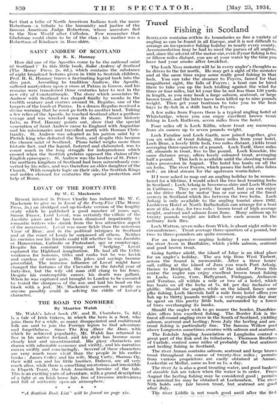SAINT ANDREW OF SCOTLAND I By R. K. Hannay How
-did one of the Apostles come to be the national saint nf Scotland 1' In this-little book, Sak Andrew' of Scotland (The Moray Press, 2s. 6d.), which contains the substance Of eight broadcast lectures given in 1933 to Scottish children, prof. R. K. Hannay traces a fascinating legend back into the dim past. According 'to traditions- Andrew, the Apostle, suffered martyrdom upon a cross at Patras in Greece, and his remains were transferred three centuries later to rest in the new city of Constantinople. The story -which associates St. Andrew with Scotland was shaped finally by monks in the twelfth century and centres around St. Regulus, one of the keepers of the tomb at Patras. In a dream Regulus received a divine warning that he must go forth to another land. Taking a few relics of the Apostle, he reached Scotland after a perilous voyage and was wrecked upon its shore. Prosaic historic facts, as Prof. Hannay points out, show that the special veneration of Saint Andrew came to England with Augustine and his missionaries and travelled north with Roman Chris- tianity. St. Andrew was adopted as his patron saint by a Pictish king who defeated the Scots, and despite this became the chosen saint of Scotland. Pious belief weighs more than historic fact, and the legend, fostered and elaborated, was to count much in the long struggle for independence which ensued when the Scottish prelates opposed the claims of the English episcopacy. St. Andrew was the brother of St. Peter : the northern kingdom of Scotland had been miraculously con- verted by his relies, and was therefore an elder daughter of the Church. With complete logic on their side, the Scottish Kings and nobles claimed for centuries the special protection and help of Rome.
















































 Previous page
Previous page